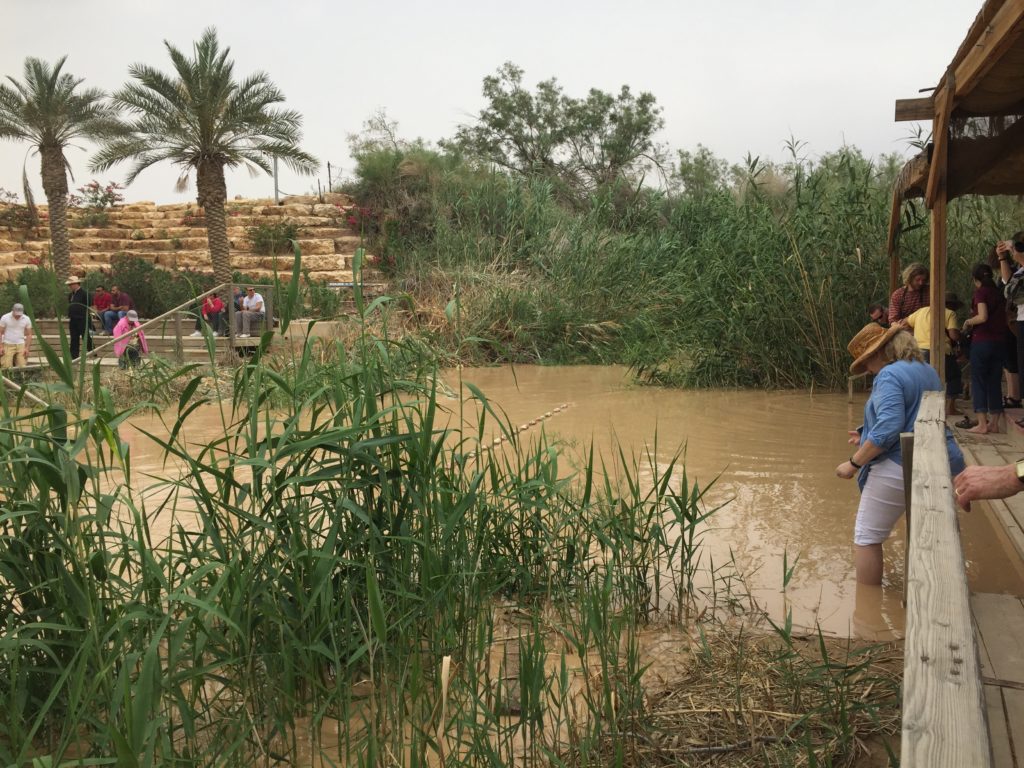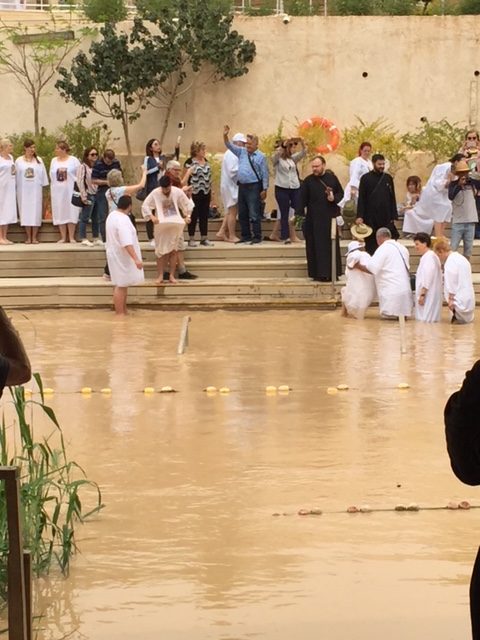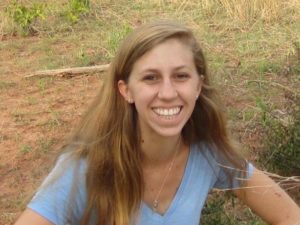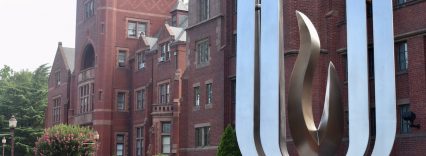Middle East Travel Seminar: Surprising spiritual moments

BY REBECCA HEILMAN
Mark 1:9-11
In those days Jesus came from Nazareth of Galilee and was baptized by John in the Jordan. And just as he was coming up out of the water, he saw the heavens torn apart and the Spirit descending like a dove on him. And a voice came from heaven, “You are my Son, the Beloved; with you I am well pleased.”
And on day four, the group heads from the capital city of Amman to Bethany beyond the Jordan to the place thought to be Jesus’ baptism. Niem, our tour guide, informed us we went from about 2,500 feet above sea level to about 800 feet below sea level within an hour. Upon arrival, we walked on a clean dirt path less than a mile to the Jordan River and John the Baptist Greek Orthodox Church. From there, we turned right to go down some steps to the river.

Sue, an alum and pastor, graciously provided a short devotion as a reminder of our baptism, as well as what the Jordan has meant to many Christians throughout history. When I descended the steps, I was both surprised by the light brown muddiness of the water and overwhelmed by the significance of the meaning of that exact spot. One thing I have learned on our trip thus far is even if I’m skeptical of the “realness” of this holy spot, there are thousands, maybe millions of people and Christians who find this land, this muddy water to be sacred. So I stood in the light brown water and prayed a liturgical prayer, I extensively studied for my exegesis ordination exam, which was often used by first century Christians, “As many of you as were baptized into Christ have clothed yourselves with Christ. There is no longer Jew or Greek, there is no longer slave or free, there is no longer male and female; for all of you are one in Christ Jesus” (Galatians 3:27-28).
 The irony, when you look up from your mud-covered feet you see a strict border dividing Israel and Jordan. I believe Paul and Jesus desired for divisions to be broken down and that breaking down such divisions is found in the sacrament of baptism. Yet in the holy waters of Jordan, where Christ and many more have been baptized, there is a border, strictly present with years upon years of political and religious tensions and divisions. However, on a more positive note, as we were leaving, we saw a line of about 20 or so (possibly) Greek Orthodox priests and congregants line up to either be baptized or to remember their own baptism. It was hard to not leave that holy space without tears or our own reminder of how we should live out baptized life.
The irony, when you look up from your mud-covered feet you see a strict border dividing Israel and Jordan. I believe Paul and Jesus desired for divisions to be broken down and that breaking down such divisions is found in the sacrament of baptism. Yet in the holy waters of Jordan, where Christ and many more have been baptized, there is a border, strictly present with years upon years of political and religious tensions and divisions. However, on a more positive note, as we were leaving, we saw a line of about 20 or so (possibly) Greek Orthodox priests and congregants line up to either be baptized or to remember their own baptism. It was hard to not leave that holy space without tears or our own reminder of how we should live out baptized life.
After Bethany, we made the long ascent through the plains of Moab, past Mount Nebo, and on to the town of Madaba (biblical reference: Numbers 21:30) where Niem informs us Madaba could be the home of Ruth and her parents. To know that the strong, independent woman of Ruth and her people walked in this arid hilly land of Moab and then for us to walk on those same grounds is absolutely incredible and an honor in itself (Ruth is one of my favorite women in the Bible if you can’t tell…biblical reference: Ruth 1:1-5)!

In Madaba, we saw a mosaic map at the Greek Orthodox Church of St. George. It is a 6th century map of the holy land including sights such as Jerusalem, The Dead Sea, Jericho, Mount Sinai, and more (view map). More than likely, it is the earliest map in existence. The Orthodox Church was constructed around the map in 1896 in order to save the map from destruction. Truly incredible!

And our last adventure of the day was to the infamous Mount Nebo. Those Biblical references include Deuteronomy 32:49; 34:1, where Moses sees the Promised Land, but is then told by God that he won’t make it …bummer because it’s beautiful! Unfortunately, the clouds were rolling in, which limited our view some, but we got to see enough! The photos include a panoramic view of the “Promised Land” as well as the top photo of some of the Richmond people!
All in all, April 26th included surprising spiritual moments, inspiring landscape, and overwhelming holy grounds that not only recall biblical stories but brings you into the Bible like never before. Thanks be to God for this Holy Land!
Rebecca Heilman is a Master of Divinity student at Union.









